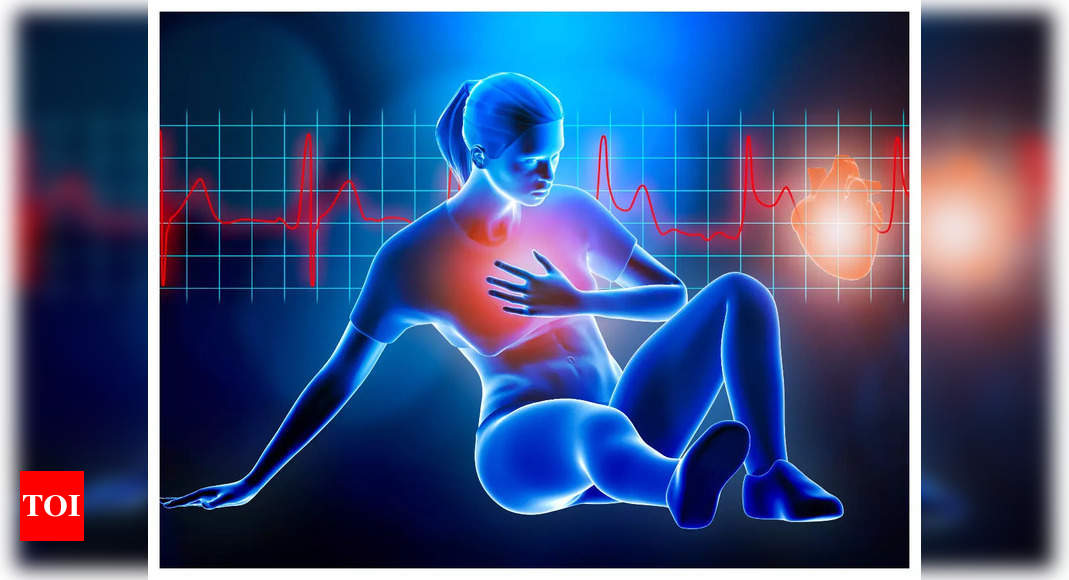Understanding cholesterol: How it can stay undetected, silently damaging heart – Times of India
Good cholesterol vs bad cholesterol
In case you believe that cholesterol in every sense is bad, you are wrong. It is essential for life. Our cells are covered with a membrane which is rich in cholesterol. It is required for the synthesis of certain hormones. Dr. Jaideep Menon, Consultant, Adult Cardiology, Amrita Hospital, Kochi explains, “Cholesterol as measured has fractions called LDL (low density lipoprotein), HDL (high density lipoprotein), VLDL (very low-density lipoprotein) and Triglycerides. Each of these fractions also have sub-fractions with varying degrees of atherogenicity (proclivity to develop atheroma or blocks in vessels). Of the cholesterol fractions, HDL is considered the good or protective cholesterol and LDL, VLDL and triglycerides the bad cholesterol. The absolute value of cholesterol which could be considered normal depends on age and presence of other risk factors like diabetes, hypertension, tobacco use or a family history of heart disease. The cardiovascular risk is also assessed from a ratio of the LDL to the HDL, which should be less than 3.5 and ideally less than 2.5.”
What leads to build up of bad cholesterol?
The way the human body works is miraculous. The human body stores nutritional excess either as glycogen or as cholesterol. Food when not burnt up gets converted into cholesterol by the liver, and gets stored. An excess of cholesterol tends to get deposited in the walls of arteries which over a period of years develops into block (atherosclerosis).
Dr Ankur Phatarpekar, Interventional Cardiologist and structural heart specialist at Symbiosis Hospital, Mumbai shares, “High cholesterol might not come without any signs and symptoms, so it is very important to check your cholesterol levels regularly. It should be a part of routine body checkups. However, there might be some symptoms and signs which can be seen in a few people which indicate cholesterol in the body like- bumps on elbows, knuckles, and liaisons in the skin, especially below your eyes but these may or may not be present in everyone, hence regular checkups are advisable.”
“Occasionally cholesterol gets deposited over the eyelids seen as yellowish bulges (xanthelasma) and certain genetic causes of raised cholesterol like familial hypercholesterolemia and familial hypertriglyceridaemia it can get deposited on the tendons of the knees and elbows as xanthomas,” adds Dr Menon.
As a raised cholesterol tends not to cause symptoms unlike diabetes and hypertension, it often gets ignored leading to catastrophic consequences.
Who is at risk of developing cholesterol related complications?
Dr Phatarpekar explains, “Some people have family tendencies to develop high cholesterol, and this makes them vulnerable to heart diseases at a very young age. So, whenever you have a strong family history of high cholesterol, getting regular checkups done is advisable. Even some school data suggest that Indian children might be suffering from high cholesterol in their early teens as well. This has largely to do with a bad lifestyle and less healthy habits.
No gender is spare from the bane of cholesterol but is slightly more common in males than in pre-menopausal women. So, gender cannot be a risk modifier in the case of cholesterol.”
Steps to manage cholesterol
Burning up whatever one eats through physical activity and exercise would definitely help prevent cholesterol from rising as 65-70% of the cholesterol actually is synthesized in the liver. Avoiding high calorie diets and red meats, adding a lot of greens and fruits to one’s diet, avoiding deep fried and bakery items etc would help prevent high cholesterol. Nuts like cashew nuts, walnuts, and almonds in limited quantities are reported to increase good cholesterol with the additional benefit from antioxidants in them which help prevent atherosclerosis.
The risk of atherosclerosis from a high cholesterol is directly linked to the presence or absence of other concomitant risk factors, dietary habits, sedentary habits, levels of stress etc. Females are as prone as males to develop a high cholesterol especially when post-menopausal and from age 55 are as much at risk for heart disease as males.
Patients with diabetes need to keep their cholesterol levels lower than normal. So, for most of diabetic individuals whenever they check their sugar every three to six months, it is also necessary that they get their cholesterol levels checked because diabetes is another hormonal imbalance which can trigger cholesterol levels in the body, even thyroid can give rise to cholesterol abnormalities.
For all the latest lifestyle News Click Here

